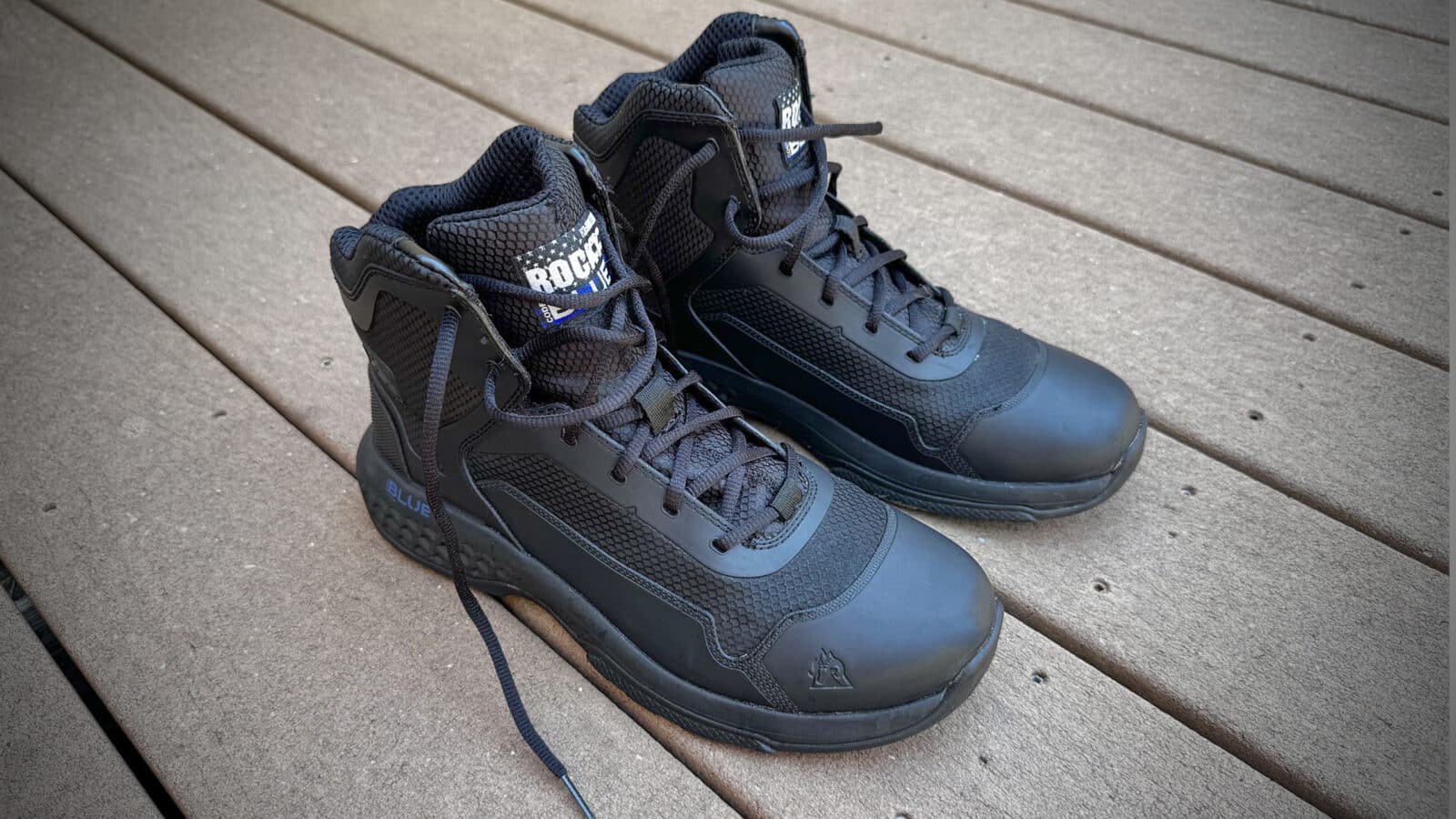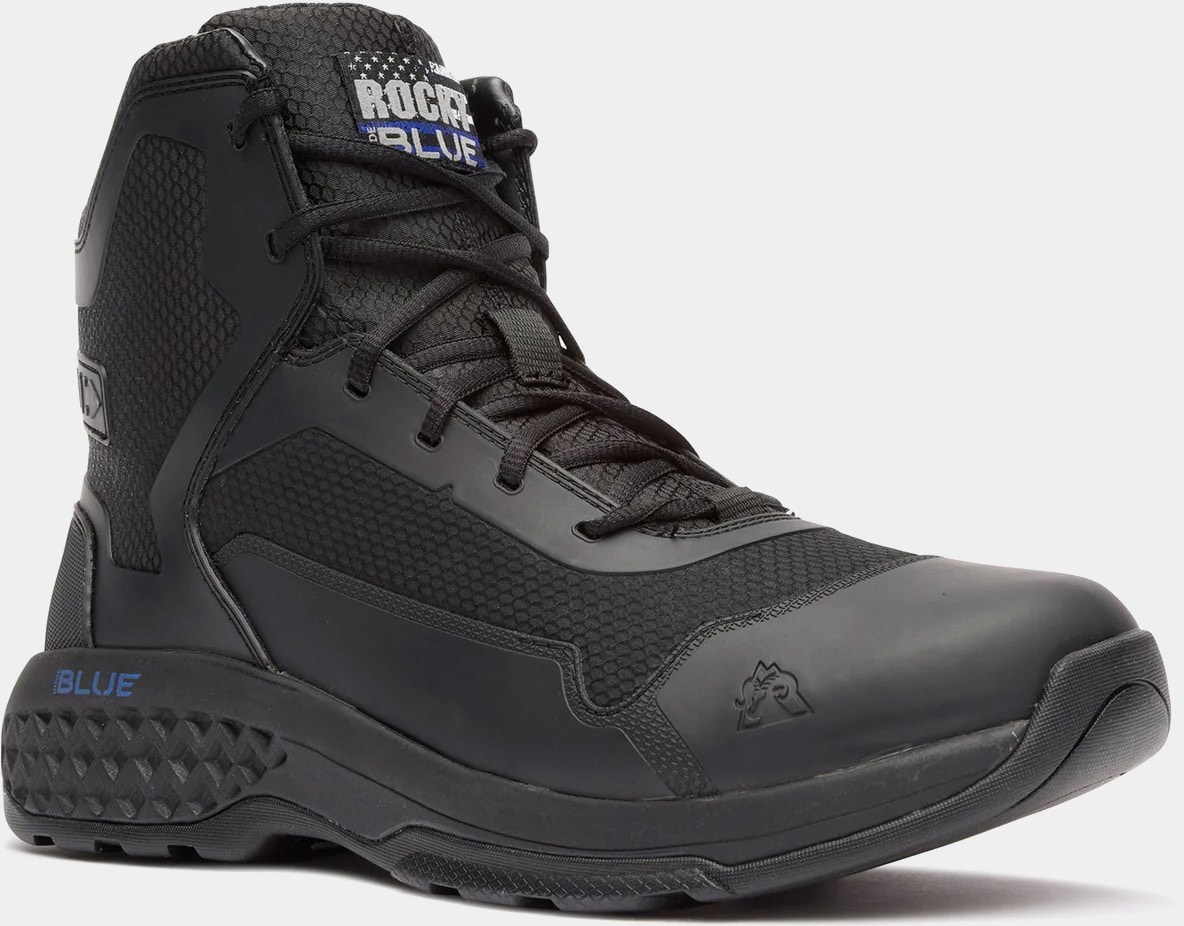In this review, Randall Chaney evaluates the new Code Blue Public Service boots from Rocky Boots. For training, duty and even working out, these boots proved to be comfortable and durable. The boots were provided for this review by the company.
After some quick math, I figured that I had walked, run or climbed a minimum of 12,000 miles while on duty in a police patrol capacity. No, I was not relegated to a foot beat. So, 25 years in a street uniform and hundreds of K9 tracks later, I think I know a thing or two about good boots. Rocky Boots sent me a pair of their Code Blue Public Service boots to test and evaluate. Here’s what I found.
When I started as a rookie, you could wear three kinds of black footwear. The first was like World War II Army paratroopers used to wear, the jump boot. The second was a Wellington style that looked like a cowboy boot. The last type was a high gloss Oxford, which was not practical for the road, but looked great in a Class A uniform.
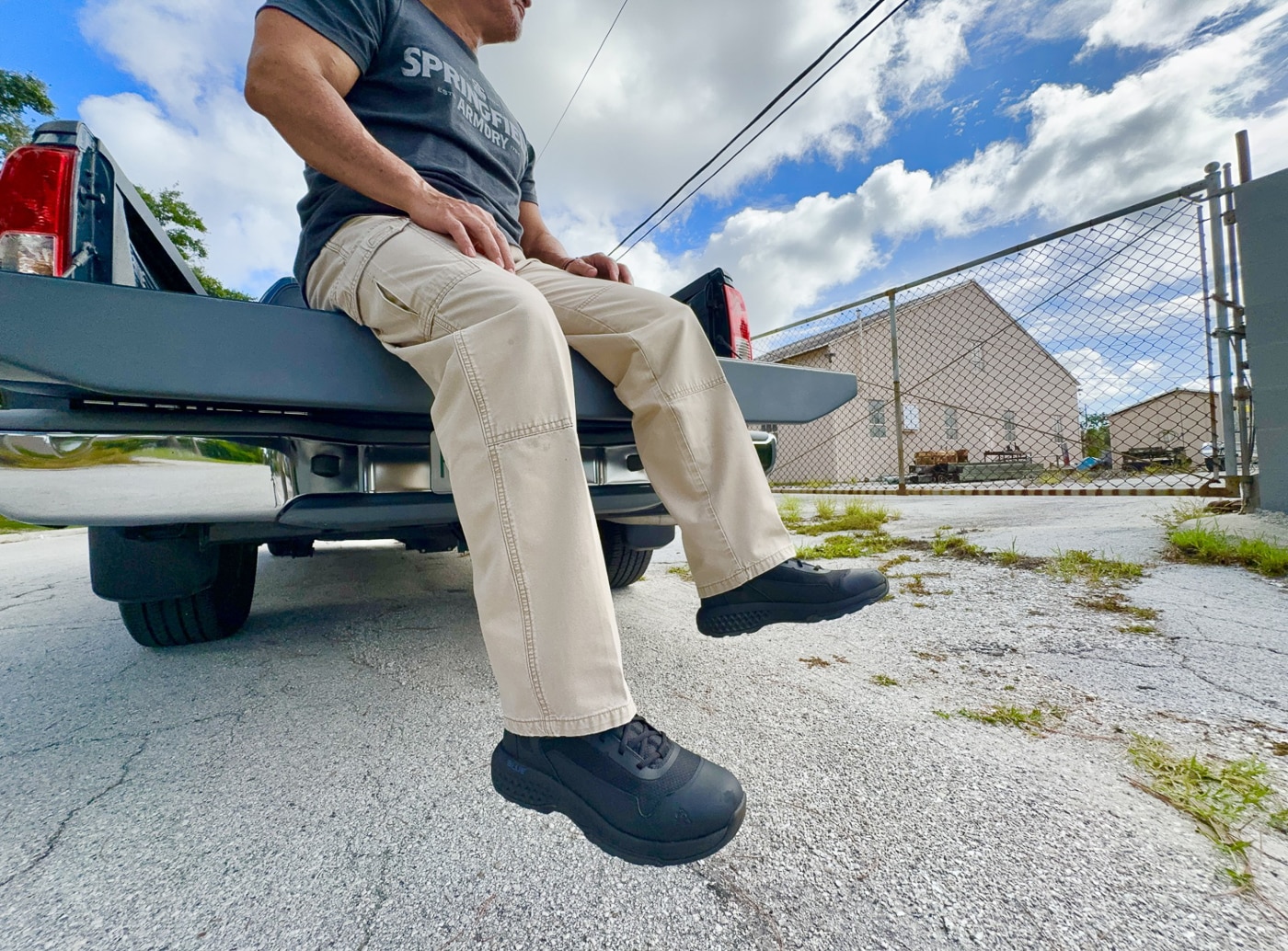
In the late 1980s, my department began to relax some of the uniform standards, and we began experimenting with lighter-weight boots to replace the cumbersome dailies. The Rocky Code Blue boots would have satisfied the requirements back then for a rugged leather upper and a durable synthetic sole.
The Code Blue Boot
The Code Blues I received were the six-inch, non-waterproof model. For pretty much my whole career, I wore eight-inch-high boots. They were a necessity in SWAT and K9 for ankle support, but maybe not so much for the average officer. So, the six-inch height would still protect the ankle but give a little quarter to the Florida temperatures.
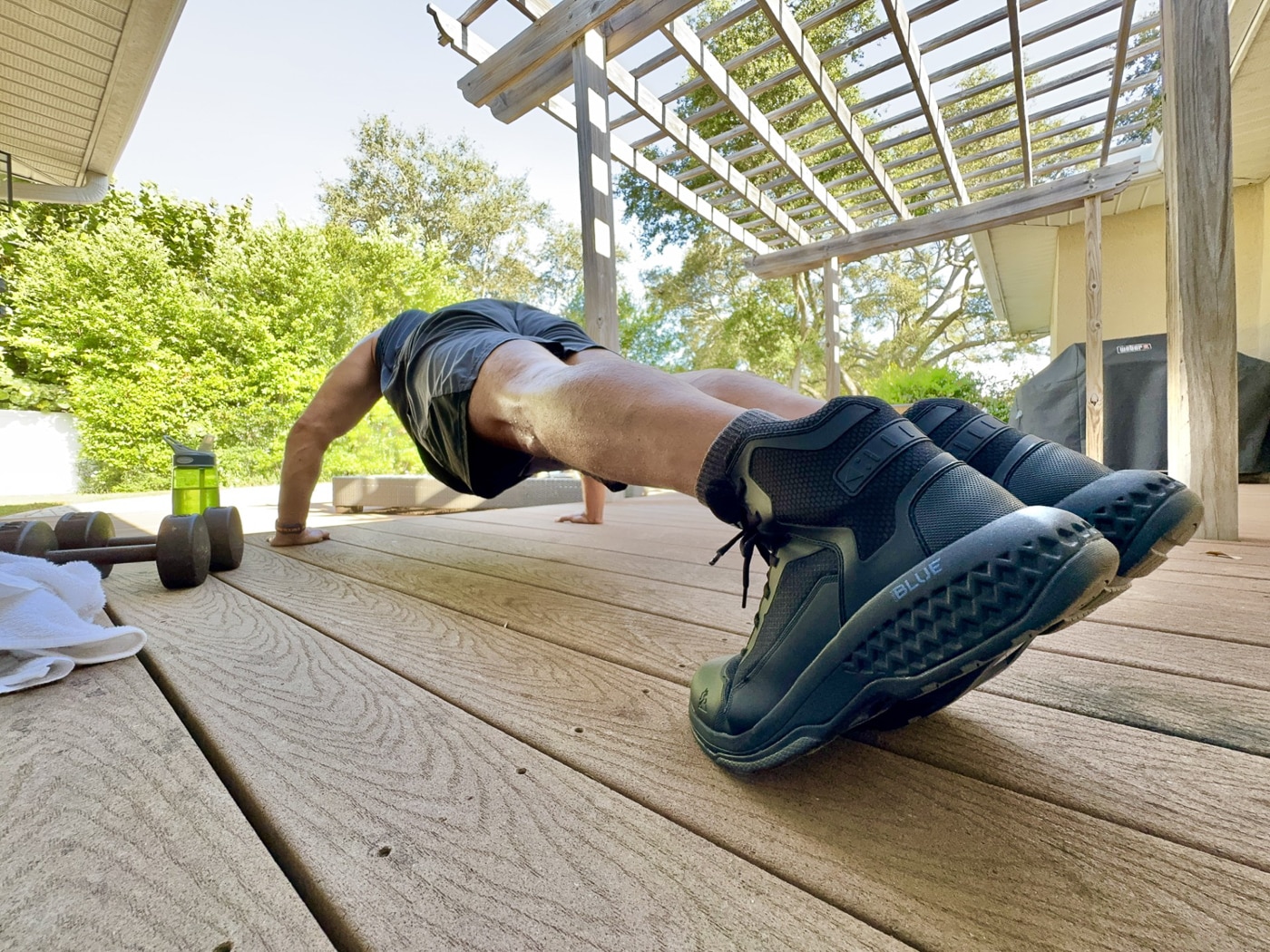
After wearing a couple of pairs of other brands’ waterproof boots, my take is that they do not breathe well. What keeps water out keeps heat and sweat in, resulting in your own little swampy micro-environments where your legs terminate. I will have to try Rocky’s technologically superior newer offerings to see if this is still the case.
The Code Blues arrived and fit perfectly in my normal shoe size. As with the Rocky Mountain Combat Boots I had previously T&E’d, the construction of the footwear was well-executed. Sewing and seams were even, and the outsoles were mated solidly to the upper. The Code Blue comes with oval laces that lock down better in the eyelets than round ones would. The collar and tongue are nicely padded.
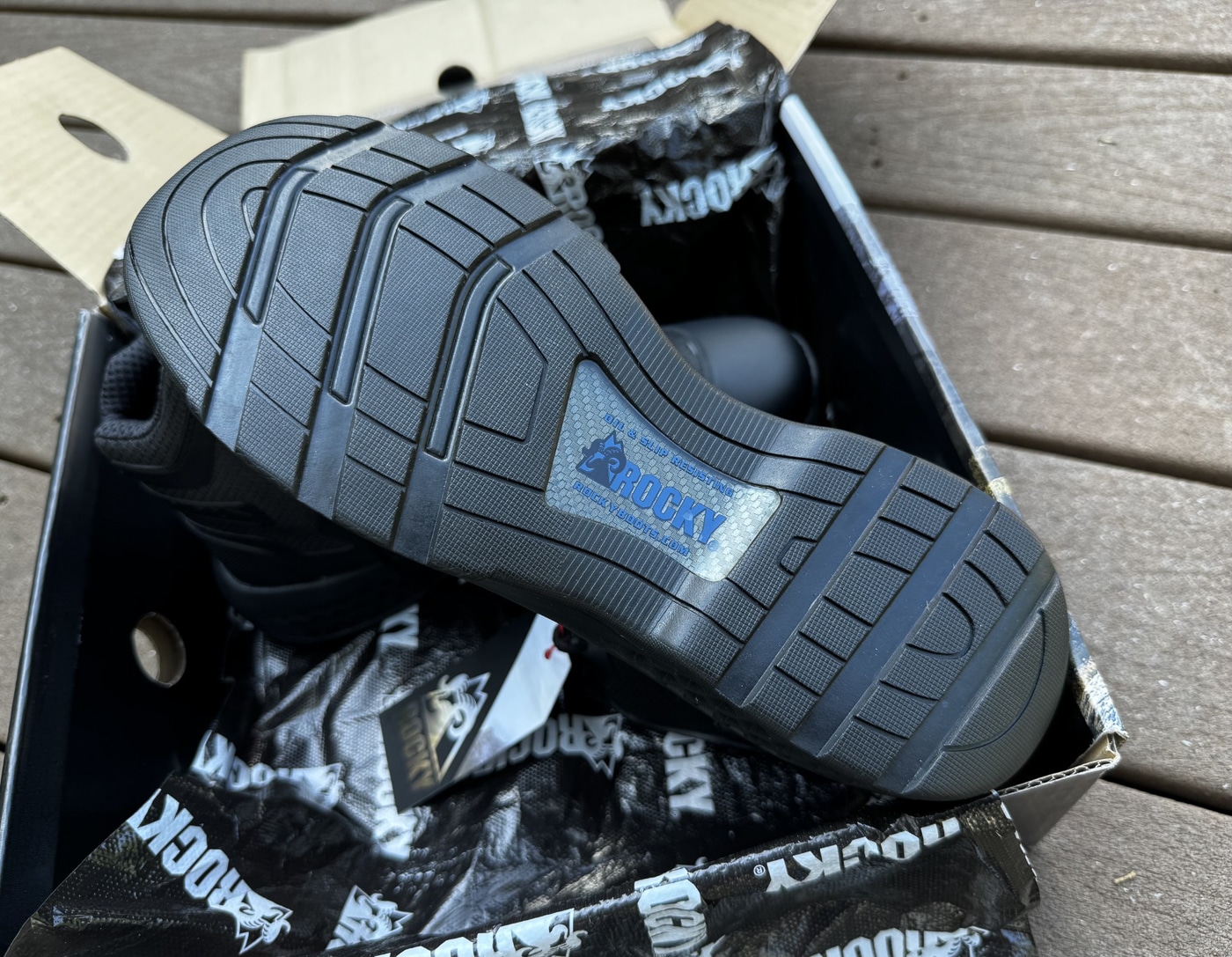
The upper of the boot mixes a breathable mesh with abrasion-resistant thermoplastic polyurethane (TPU) overlays. The TPU replaces the leather found on most boots’ outers. It is sewn and cemented to the cushiony mesh to form a tough yet comfortable boot. The rectangular lacing holes of the boot are punched through the TPU on the instep, eliminating the need for metal eyelets. In fact, the entire boot is non-metallic.
The footbed of the boot is a removable patented Comfort Track insert. It is just short of spongy and is supported beneath by a fiberglass shank. As in the Mountain Combat, the fiberglass shank stiffens the sole to give the boot stability, not to provide puncture protection from punji sticks.

Beneath this, the Rocky’s Rebound midsole is made of ethylene-vinyl acetate (EVA), which is an elastomeric polymer that is similar to rubber. It is shock-absorbing and not prone to stress cracks. With this and the footbed, I found them to be extremely comfortable boots. The actual outsole of the boot is an oil and slip-resistant rubber.
The outsole is treaded more like a car tire than an off-road truck tire, if that makes sense. It is not lugged on the bottom but has large lateral grooves and smaller concentric ones to provide traction and to keep it from hydroplaning on a wet surface. The rubber sole gave good grip on a variety of terrain on which I tried them.
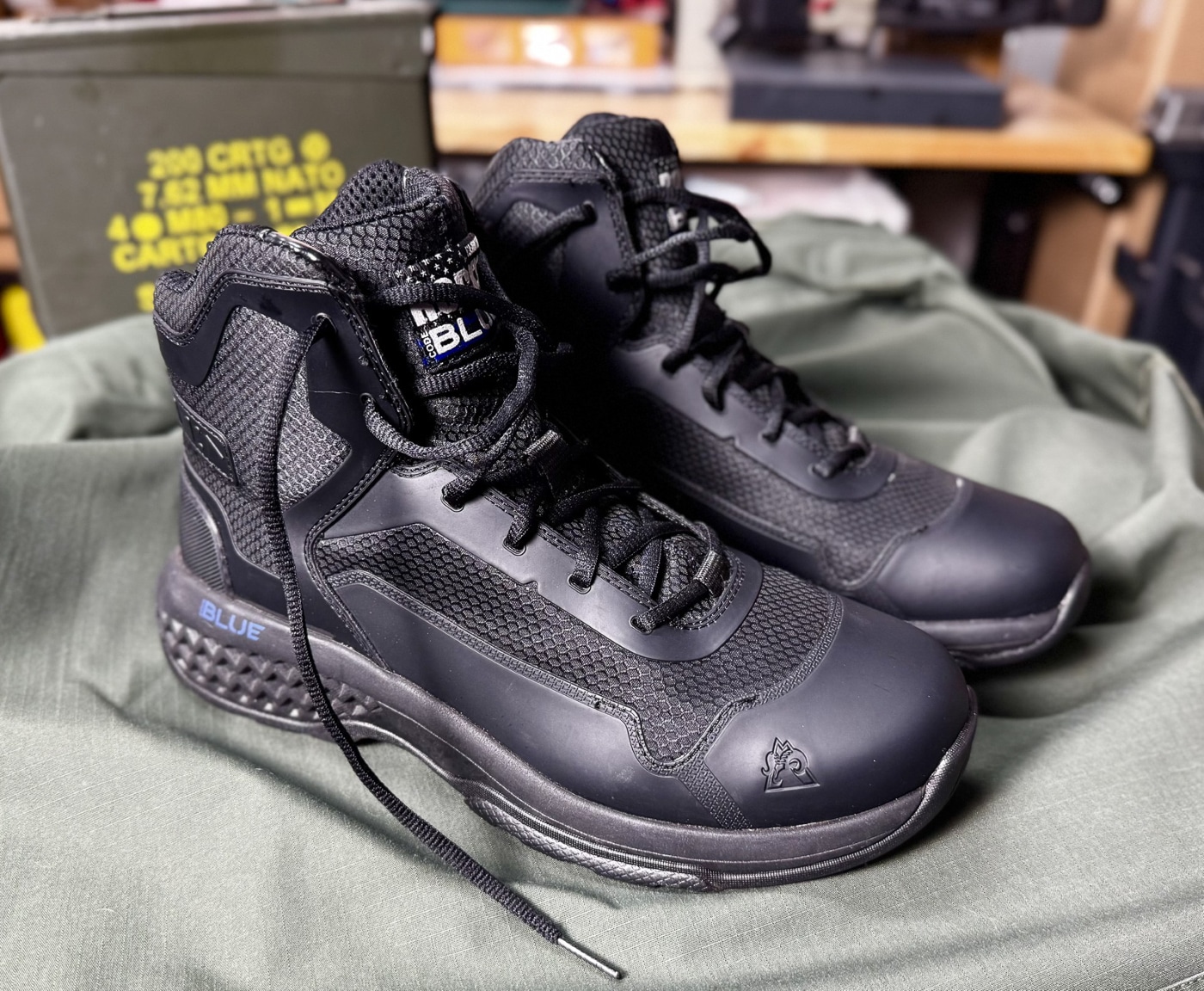
While not necessarily an outdoors boot, I took the Code Blues into the scrub and traversed a few drainage ditches and overgrown areas. I did make them (and me) climb up a few chain-link fences for good measure. If you were forced into the bush during your daily activities, these boots will work just fine. The outsole is rather flat, though, and on a very rugged, mountainous environment, they might struggle a bit to find purchase.
In Practice
To simulate everyday wear on the boots, I took to donning them for my circuit training workouts. In such, the Code Blue goes through a regimen of calisthenics and high-repetition weight training. I began this abruptly a few months ago with no break-in period on the boots. Part of the reason was that they just felt foot-friendly out of the box.
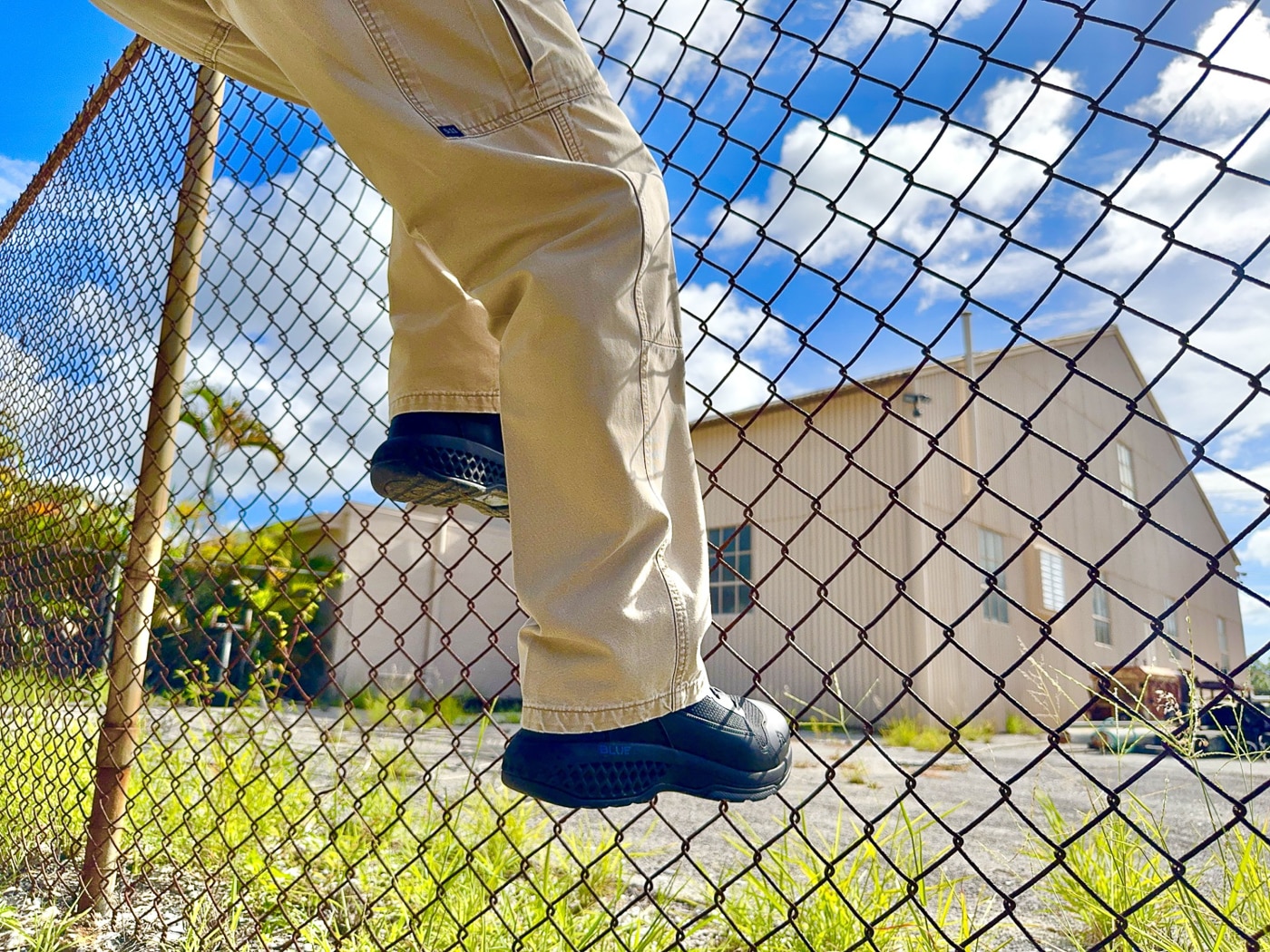
During my “Circuit of Doom,” the boots get subjected to side-straddle hops, burpees, lunges, high knees, calf raises, various push-ups, and jumping up to my pergola for pull-ups. These exercises, and others, put stress on the boots in various directions and accelerate the wear and tear a pair of boots might have in everyday active life. I had no problem trading my trainers for these Code Blues.
Conclusion
For a boot with an MSRP of just $98.00, they held up their end of the bargain. I have seen no separation of the sole from the upper. I mistook the thermoplastic polyurethane (TPU) for quality leather when I first examined the boot. It is a sturdy material that does not scuff easily. The TPU will even take a shine, as I found out when testing with some black Kiwi polish.
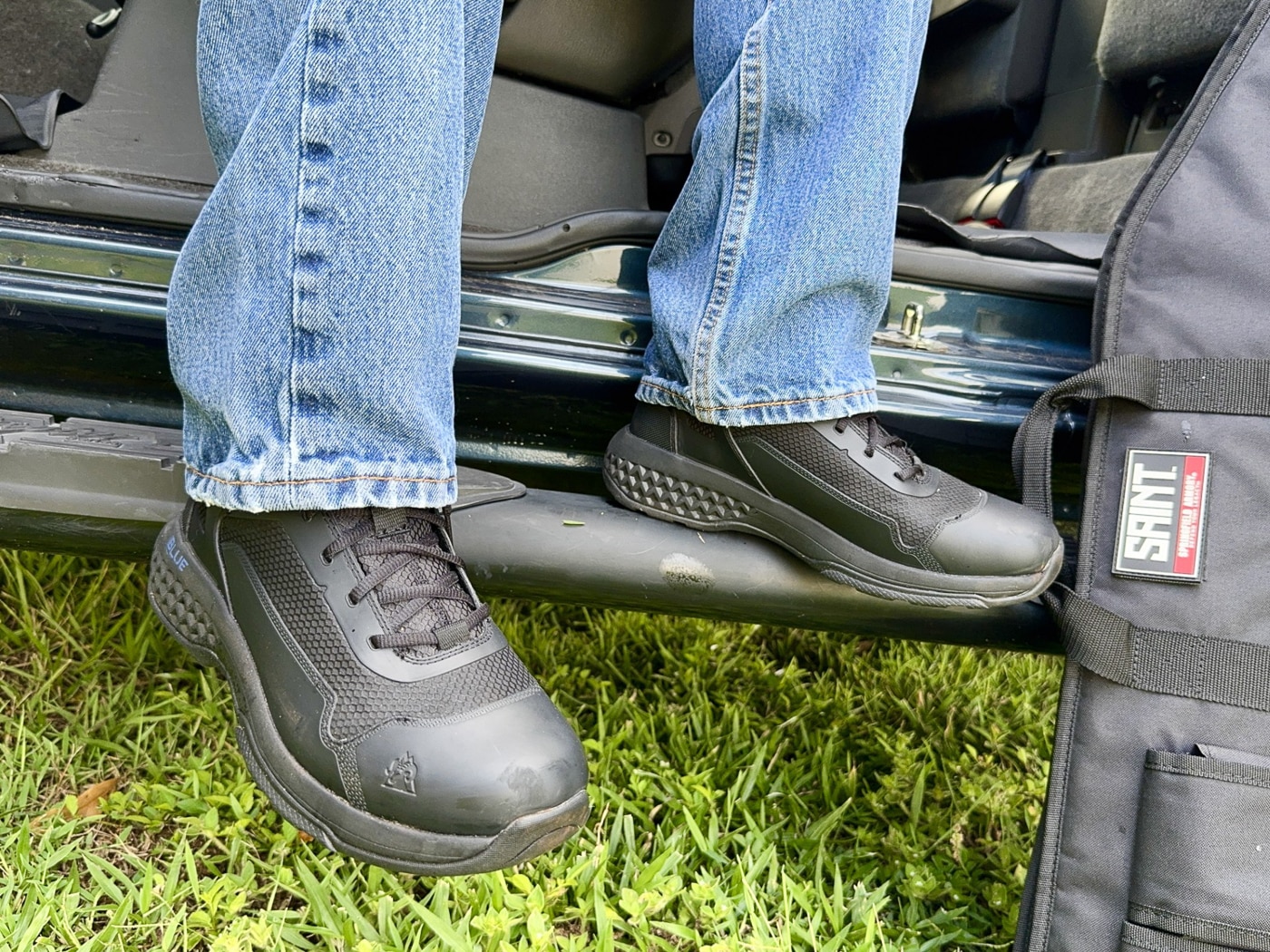
Whenever I had a recruit to train, I would tell them that police work is doing whatever needs to be done. This could be from corralling livestock to pushing cars out of the road, searching fields for evidence, rescuing victims from house fires, or sitting on the floor comforting a scared child.
Public safety professionals’ footwear must be just as adaptable. You may be at city hall for a meeting one minute or slogging through the woods next. Your boots have to be presentable but handle all manner of abuse and rebound to the next shift. These Rocky Code Blue boots will get you there and back on a budget.
Editor’s Note: Be sure to check out The Armory Life Forum, where you can comment about our daily articles, as well as just talk guns and gear. Click the “Go To Forum Thread” link below to jump in!


